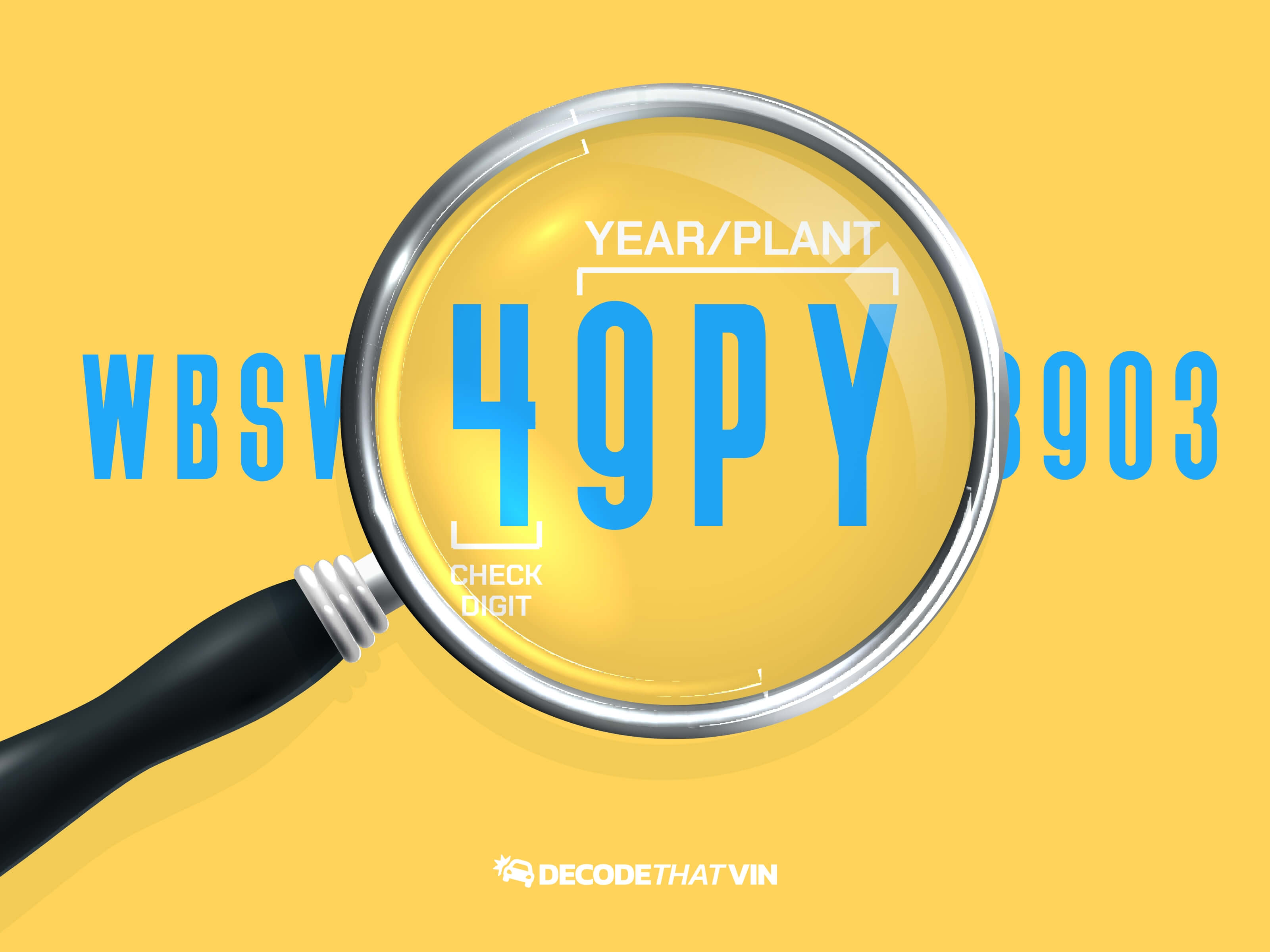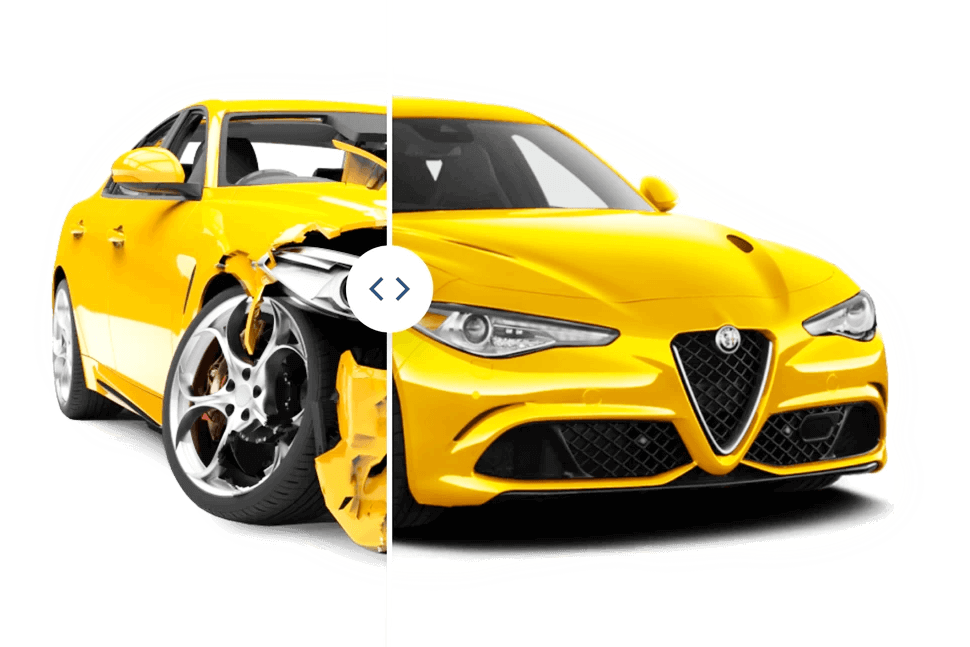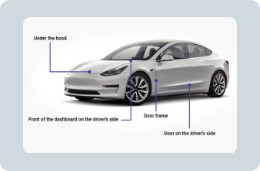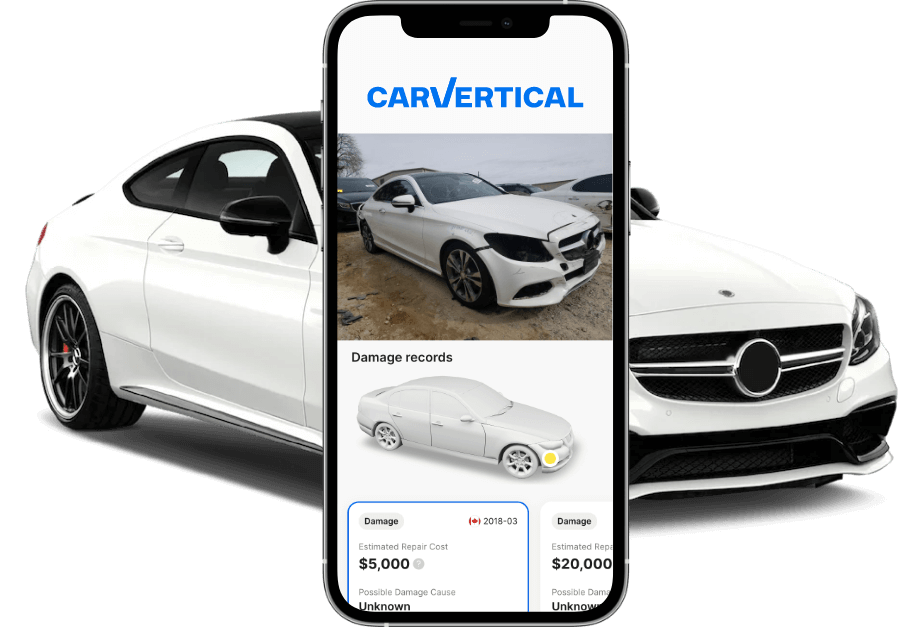The vehicle identification number (VIN) is a unique string of numeric and alphanumeric characters assigned to a vehicle that contains information to describe and identify the vehicle. The VIN number can be located on the dashboard, visible through the windshield on the driver's side, as well as on the driver side door jam.
A vehicle identification number, VIN, is a unique code used to identify each vehicle produced by the automotive industry. You will find below more information about the VIN number decoder, from what each element represents, how to decode your VIN, is it safe to decode your VIN, where is the VIN located on cars, motorcycles, and trailers, and how many digits does a VIN have. Continue reading to find out all this information.
Are VIN and Chassis Number the Same?
A vehicle identification number, also known as VIN, represents the vehicle's unique identity code. A VIN used to be known as a chassis number, and the terms are often confused. Basically, the VIN in modern cars and the VIN in old cars are used to identify the vehicle in the same way. Both act as serial numbers and are not the same as engine numbers, but VIN has more information than chassis numbers and VIN is always 17 characters long. This VIN acts as a way of identifying all the information necessary about the car. It is often compared to a fingerprint for cars because there cannot be two identical VINs.
VIN is designed to help differentiate and identify the exact vehicle, primarily for registration, insurance, finance, recall and service activities, and to help garages order the correct parts for a specific vehicle.
Using a VIN allows manufacturers to easily isolate vehicles involved in recalls and allows authorities to correctly identify whether a car has been stolen or used for crime, even if it is destroyed by fire.
In most cases the VIN is located in several places on a car, either stamped into the metal, under the hood, on a structural part, on a bottom corner of the windshield, on a build plate or on an adhesive self-voiding label attached to the driver’s side door frame. In this case, a sticker is removed if someone tries to take it off. When buying a new or used car it is important to check the VIN to ensure that it matches the information provided by the seller. Registration authorities and insurance companies also want to verify the VIN before issuing any documents.
Number of Digits in a VIN
Most people believe that the VIN is just a series of meaningless digits and letters. However, these characters are highly structured code which have their own meaning and structure. Vehicles from 1980 to present have a VIN made up of 17 characters. Prior to 1981, the VIN was a string of 13 characters.
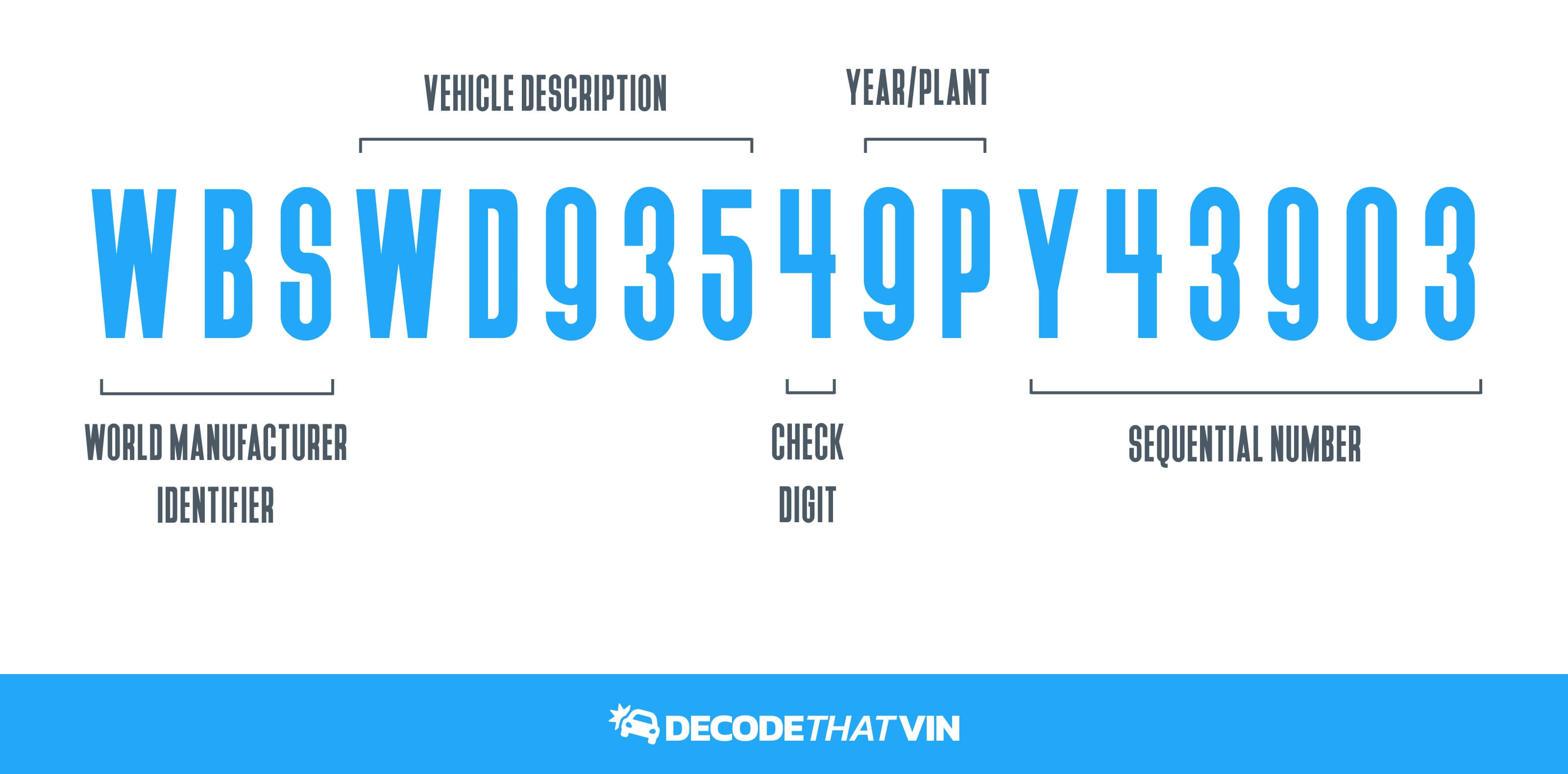
What Is a VIN Decoder?
VIN Decoder is an online tool designed to help car buyers and owners easily and quickly understand all the data related to a particular car. To decode your vehicle, you should follow these four steps, and you will get the information you need about your vehicle for free.
- Enter your VIN into the VIN decoder search bar.
- Click on the “Decode”
- Receive free information about your vehicle in a matter of seconds.
- You can access the report using your laptop or your phone.
From what you have read here from the start up to here, the process is very straightforward. Thanks to the large amount of data on all vehicles, it can access and provide detailed information about any operator.
Vehicle information stored in a VIN decoder includes characteristics such as engine, car make, model, transmission type, year of manufacture, place of manufacture and serial number. The data stored here is continuously updated and more data is added. So you can get correct and updated data about the particular car. Therefore, VIN decoder identification can protect you from fraudulent vehicle transactions, especially when buying a car.
Locating Paint Code in a VIN
Your VIN doesn’t explicitly indicate your car’s paint code, which is the number used in matching paint to a car’s exact shade. Most cars include a list of color codes on the driver's door jamb. There is usually a tag there that contains details about the car, including the color of the paint. These placards list two paint codes: an interior paint code and an external paint code, which are occasionally referred to as "trim" and "paint," respectively.
The paint codes might occasionally be more challenging to locate. Check your owner's handbook if you can't find any information on the color code in the door jamb. The location of the color code signs is often indicated, eliminating the need for guesswork.
Is VIN Decoder Safe?
In most cases, it is safe to list the VIN number when selling a car. However, this practice can be beneficial or detrimental depending on how you sell your car. You might be wondering if it's that dangerous if someone knows your car's identification number. In essence it is not. However, each VIN is associated with owner information. Anyone who wants to know your identity, address, nationality, age, etc. Such personal information can be obtained by tracking your car's VIN.
No matter what kind of car you're planning to sell, your decision must come down to whether disclosing the Vehicle Identification Number (VIN) raises the risk of being targeted for identity theft. At one time, people were warned against revealing the VIN to potential buyers because they believed it led to someone getting access to private information regarding their identity. While this may be true in certain circumstances, you should be able to share the VIN without putting yourself at any sort of risk.
In most cases, sharing the VIN is safe enough to pass on to a potential buyer. However, it is not recommended to share it online unless you intend to sell the car to someone else. Your VIN should not be published online because it may lead to identity theft. Thieves may trace back your VIN to obtain your personal information, including your name, address, nationality, and age. Do not forget to protect yourself against identity theft.
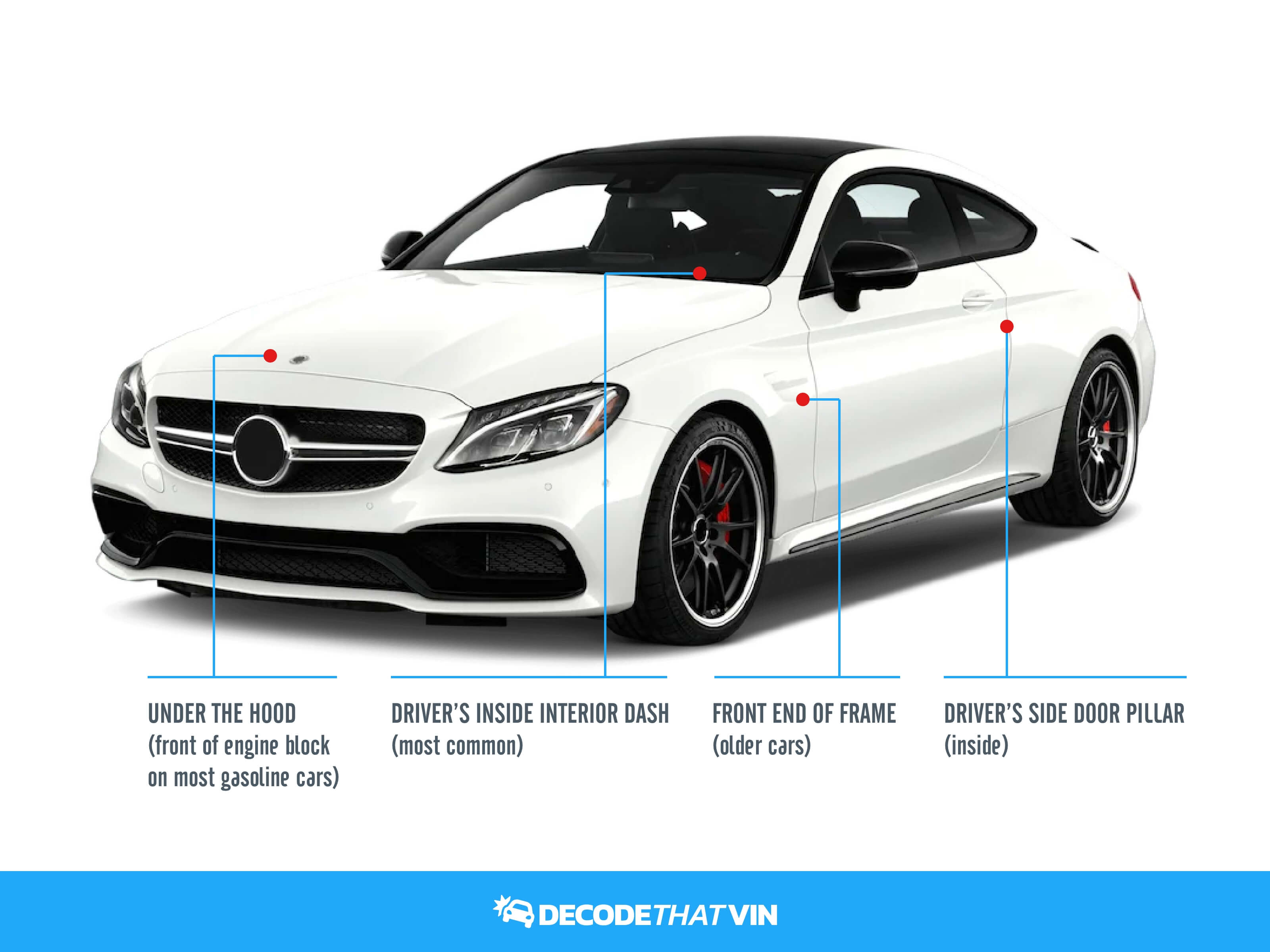
How to decode VIN Number
This section presents you how to read and decode a car’s VIN. It will be easier to find out the precise components for your car, allowing you to prolong the life of your car. Here, we examine the meaning of each digit in a VIN code and how it might be used to learn more about your car.
The first three digits of the VIN identify the manufacturer, the country of origin, and the particular division within the company.
1st - A letter or number showing where in the world the car was built. Remember the following:
- A-H – Africa
- J-R – Asia
- S-Z – Europe
- 1-5 – North America
- 6-7 – Australia and New Zealand
- 8-9 – South America
2nd - The manufacturer that made the car
3rd - The specific division of a manufacturer that made the car
The next five digits outline specific details about the car, including the engine size, safety features and body style.
4th - Safety features and model-specific information
The fourth digit gives details of the car’s model-specific features, such as additional safety information.
5th - The car’s series
This represents the exact series of a specific model, usually shown by a letter.
6th and 7th - The body style
Convertible, saloon or hatchback; the 6th and 7th digits show the car’s body style and type.
8th - Engine size
The eighth digit shows the car’s engine size and is usually represented by a letter. This is really helpful if you’re buying spare parts for your car, as it ensures that you can find a spare that’s the exact match for the engine type.
9th - The "check digit" is used to confirm the validity of the VIN code.
The check number should line up with the remaining VIN digits using some intricate calculations that can be complicated. Since it needs some complex calculations, it's challenging to determine whether a VIN is legitimate on your own, but an online VIN decoder should be able to tell you.
10th - The tenth digit shows exactly how old the car is.
It could be a letter or a number depending on its age, and using the table below, you'll be able to find out what year the car was made.
| 10th Digit | Year | 10th Digit | Year |
|
A |
1980 |
Y |
2000 |
|
B |
1981 |
1 |
2001 |
|
C |
1982 |
2 |
2002 |
|
D |
1983 |
3 |
2003 |
|
E |
1984 |
4 |
2004 |
|
F |
1985 |
5 |
2005 |
|
G |
1986 |
6 |
2006 |
|
H |
1987 |
7 |
2007 |
|
J |
1988 |
8 |
2008 |
|
K |
1989 |
9 |
2009 |
|
L |
1990 |
A |
2010 |
|
M |
1991 |
B |
2011 |
|
N |
1992 |
C |
2012 |
|
P |
1993 |
D |
2013 |
|
R |
1994 |
E |
2014 |
|
S |
1995 |
F |
2015 |
|
T |
1996 |
G |
2016 |
|
V |
1997 |
H |
2017 |
|
W |
1998 |
J |
2018 |
|
X |
1999 |
K |
2019 |
11th - This shows at which manufacturer plant the car was made.
The manufacturer's designated manufacturing line number appears in the last six digits of the VIN code. Although you're less likely to need this section of the VIN, it occasionally can be useful in locating a part if certain modifications were made to a particular model at the time of production.
It's rewarding to know how to decode your car's VIN, and you can use that knowledge to purchase the parts you require to keep it in top condition. It's also a terrific method to find out more before you decide to buy a used car, such as its background.
Of course, there is an easier way to decode a VIN number than going through the letters themselves. You can just type the VIN into a search engine and get a wealth of results on how to decode a VIN. However, if you're interested in finding out more about your vehicle's VIN, there are now several companies online that allow you to do so in a matter of seconds.

Locating VIN on Car
The VIN number will be stamped into the chassis of a vehicle, usually found in the engine bay or beneath the plastic trim around the driver or passenger door opening. These numbers are unique to each vehicle and allow easy identification of vehicles in police databases.
Locating VIN on Motorcycle
It's possible that you may need to search many locations on the bike for this number because it can be found in various locations. The VIN is typically located to the right of the headstock tube on the vast majority of motorcycles. Usually underneath the throttle, on the portion of the frame through which the forks pass. The VIN will be deeply engraved on the frame.
Locating VIN on Trailer
The VIN number is located on the metal plate or on the Federal certification label for fifth wheels, travel trailers, and other towable recreational vehicles. The label is normally located somewhere towards the bottom of the sidewall on the RV's left front corner (lower roadside).
Why Is the BMW VIN Decoder Not Working?
In 2019, BMW stopped using the original VIN format and began using the last seven digits instead. Only the full VIN is now unique. Some decoder apps detect this and ask you to type the full VIN or select an appropriate vehicle from those that match the same seven numbers. Others ignore the change and simply display any VIN that matches.
Conclusion
You will require your car's Vehicle Identification Number (VIN) when applying for auto insurance or to get a car history report on your car; there are a number of websites which offer free VIN number searches online. If you are thinking about buying a used car, you should do a vehicle history report. A vehicle history report will tell you about the vehicle's previous owner(s), check for any accidents or repair work done to the vehicle and find out if the car had ever been reported as stolen. You can also learn if the manufacturer ever issued a recall on the vehicle you are considering buying and see if the repairs to the vehicle were ever done.
